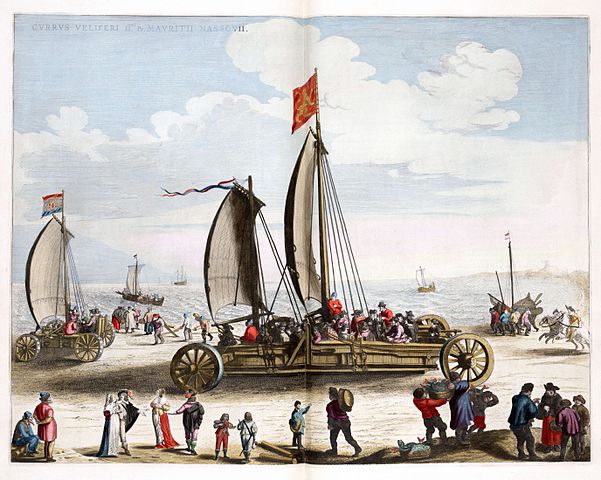It looks like you're using an Ad Blocker.
Please white-list or disable AboveTopSecret.com in your ad-blocking tool.
Thank you.
Some features of ATS will be disabled while you continue to use an ad-blocker.
share:
originally posted by: Harte
originally posted by: Anaana
originally posted by: Spider879
Kool find as usual, now if they had just added a sail and steering.
Well...that's the energy crisis solved...
If we opted for that solution, we would use up all the wind, leading to a new crisis - the "wind crisis."
Harte
Seriously you think we are ever going to end up with a shortage of wind what with all the hot air being blown out of the arses* of the good and the great. Prime Minister Cameron, alone, could power a whole fleet of Hummers on the typhoons of toss that he spews out.
(* = mouths)
edit on 8-7-2015 by Anaana because: H
You're right, of course.
All we'd need to do is vent some of the hot air out of ATS. That would be more than enough to replace any of the wind we might use up.
Renewables, you know.
Harte
All we'd need to do is vent some of the hot air out of ATS. That would be more than enough to replace any of the wind we might use up.
Renewables, you know.
Harte
originally posted by: Anaana
There's no need to simply consider it these aspects of our shared cultural history are reasonably known, genetics and linguistic studies are filling in the gaps in our understanding from which a pretty comprehensive picture of human activity and movements in prehistory is125,000 years ago we were able to travel the coastlines from Africa into the Arabian plateau and from there we could use that technology to navigate the coastline all the way to Australia, eventually. It took another fifty thousand years for us to start adapting to inland conditions, potable water being a primary consideration which the coast hoppers had already overcome, malaria would have been harder for those travelling in land without the sea water to keep them clean. Over this very long process we eventually made it to a point where we had adapted to the harshest of environments, or some of us had, the Yamanaya best represent this group moving up into the Siberian tundra and there, branching off into the Americas over the ice bridge around 24,000 years ago, as well as expanding west across the Pontic steppe. I believe that it is likely that long prior to conceiving of the wheel, they had employed the sledge, enabling them to traverse vast distances across the ice in winter to trade with those in the temperate zone. When they entered the Americas there is evidence that they took with them domesticated dogs. Living most of their lives in a frozen landscape they lived by night, and navigated by the night sky, recognising, as night dwellers do, that the stars are not fixed. The groups that descend from the Yamnaya share the same root symbolic language.
The wheel seen as an adaptation of the sledge, to a change in their environment, the retreat of the glaciers that enabled their success to continue at trading across vast distances. It also led to their ability to occupy the newly emerging, lush grasslands of Pontic Steppe, enabling them to adopt cattle herding on a much larger extent and leading to a population explosive that resulted around 5,500 years ago in their expansionism, what we refer to as the Proto-Indo European culture that moved, simultaneously, though at varying paces, down from their Eurasian heartland the Pontic region into central asia and Europe. The wheel appears with them, along with the roots of five words that relate to the wheel. Once that technology is available for other minds to consider it is adapted to other uses, and once horse power had been bred and harnessed, it was perfected, everything else since is merely tweaking.
I've just noticed a thread about the new genetic information coming out with regard to the Yamnaya that I refer to up above...with links to interactive tools and the such-like.
originally posted by: theabsolutetruth
www.abovetopsecret.com...
Good stuff
new topics
-
More NY Justice System Corruption
Social Issues and Civil Unrest: 43 minutes ago -
Would Democrats Be in Better Shape if They Had Replaced Joe Biden with Kamala Harris in July 2024.
US Political Madness: 7 hours ago
top topics
-
It's time to dissect the LAWFARE
Dissecting Disinformation: 15 hours ago, 12 flags -
Liven things up with some COMMUNITY!
General Chit Chat: 12 hours ago, 8 flags -
US spent $151 BILLION on illegal immigration in 2023 alone: DOGE
US Political Madness: 12 hours ago, 6 flags -
CIA Whistleblower Kevin Shipp claims CIA was involved in MH370's disappearance
General Conspiracies: 12 hours ago, 5 flags -
President Biden is Touring Africa. Why?
Politicians & People: 12 hours ago, 5 flags -
Would Democrats Be in Better Shape if They Had Replaced Joe Biden with Kamala Harris in July 2024.
US Political Madness: 7 hours ago, 3 flags -
Russian Disinformation Campaign Claims Stalker 2 Is Used To Locate Ukraine War Conscripts
Mainstream News: 14 hours ago, 2 flags -
More NY Justice System Corruption
Social Issues and Civil Unrest: 43 minutes ago, 2 flags




